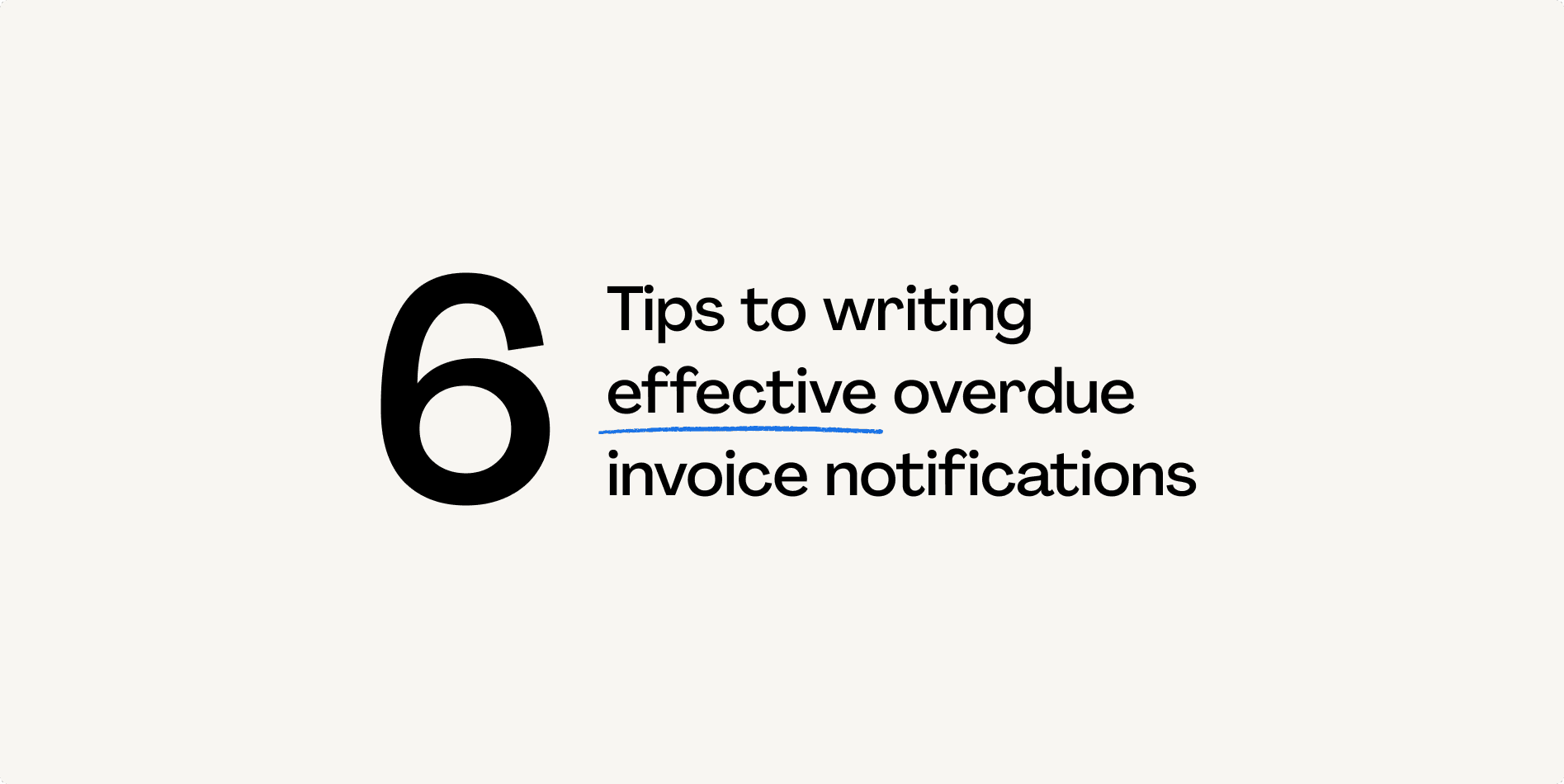What You’ll Learn:
- Proactive strategies to prevent overdue invoices before they occur
- Steps to manage overdue invoices and maintain client relationships
- How tools like Flow can improve cash flow and streamline invoicing
We’ve all been there—staring at an overdue invoice collecting more dust than cash, wondering if your client’s check got lost in some financial black hole.
Late payments are a stress-inducing headache for any business of any size. Managing outstanding invoices isn’t just about the money. It’s about the mental energy spent wondering, waiting, and sometimes awkwardly asking, “So, about that invoice…”
Any unpaid invoices can mean juggling your own bills, potentially dipping into savings, or feeling that knot of anxiety tightening in your stomach.
But here’s the good news: you’re not powerless. With some smart strategies and the right tools, you can minimize those overdue invoices and keep your business’s financial health on track. Let’s walk through some real-world tactics that can help you get paid faster and stress less.
Proactive Strategies to Reduce Overdue Invoices
1. Optimize Invoice Design
A well-designed invoice can significantly impact how quickly clients pay. To make invoices more effective:
- Use clear payment terms: Clearly state payment terms, due dates, and penalties for late payments. Avoid confusion by using straightforward language.
- Offer multiple payment methods: Make paying easy for clients by including options like credit cards, bank transfers, or digital wallets.
- Provide early-payment discounts: Incentivize prompt payments by offering a small discount for clients who settle their invoices early.
2. Automate Invoicing and Reminders
Manual invoicing processes are prone to delays and errors. Automation can help streamline the entire process.
- Use tools like Hopscotch: Automatically generate and send invoices to clients. Set up an automated reminder series to follow up on unpaid invoices.
- Integrate with accounting software: Linking invoicing tools to your accounting system reduces data entry errors and ensures seamless payment tracking.
By combining clear communication with automation, businesses can encourage clients to pay on time and reduce the administrative burden of manual follow-ups.
Reactive Strategies for Managing Overdue Invoices
How to follow up on overdue invoices
Polite and timely communication is key to recovering late payments. When following up:
- Send a friendly reminder: Start with a professional, courteous reminder a few days after the due date.
- Escalate tone progressively: If payment is still not received, send more formal notices while maintaining professionalism.
- Use multiple channels: Contact clients via email, phone, or even physical letters to ensure your message gets through.
Every interaction is an opportunity to reinforce your professionalism and the value of your services. By approaching overdue invoices with strategy, patience, and clear expectations, you’re not just collecting money – you’re building a reputation for reliability and respect in your business relationships.
Want help managing your overdue invoices? Sign up for Hopscotch Flow today.
How to charge interest on overdue invoices
Charging interest on late payments serves two purposes: deterring delays and compensating your business for the wait. Ensure you:
- Communicate clearly upfront: State the interest rate and how it will be calculated in your contract or invoice terms.
- Follow legal guidelines: Verify the maximum allowable interest rates to ensure compliance in your state or country.
- Calculate and document accurately: Use invoicing software to ensure accurate calculations. Missteps in calculating interest can damage client trust.
Including interest charges as part of your invoicing policy can discourage late payments and help your business recover some of the costs associated with payment delays.
Rules About Late Fees and Interest on Overdue Invoices
Charging late fees or interest on unpaid invoices can be an effective way to discourage payment delays and recoup some of the costs associated with waiting for payment. However, it’s crucial to navigate these practices carefully to avoid potential disputes or legal issues:
- Adhere to state or federal laws: Different regions may enforce specific regulations governing late fees and interest charges. For example, some states cap the maximum allowable interest rate or require explicit disclosure of penalties in contracts. Failing to comply with these rules can lead to legal complications.
- Document terms clearly: Clearly outline the terms and conditions for late fees and interest in all client agreements and invoices. This includes specifying the percentage rate, how it gets calculated (e.g., daily, monthly, or annually), and when it will apply. Transparency minimizes misunderstandings and helps ensure that clients are aware of their obligations.
How to Collect Overdue Invoices
When initial efforts fail to collect unpaid invoices, it may be time to escalate your approach. While escalation can feel confrontational, safeguarding your business’s financial health is often necessary. Here are the key steps:
- Send a final demand letter: Draft a professional letter that clearly outlines the overdue amount, the original due date, and a firm deadline for payment. This letter should convey urgency while maintaining a professional tone. Mention potential next steps, such as engaging a collections agency or pursuing legal action, to underscore the seriousness of the situation.
- Engage a collections agency: For clients who remain unresponsive, hiring a professional collections agency can be an effective solution. Collections agencies specialize in recovering funds, allowing you to focus on running your business while they handle the legwork. Be sure to choose an agency with a strong reputation and experience in your industry.
- Consider legal action: If all other efforts fail, consult with a lawyer to explore legal options. Small claims court is a common choice for recovering smaller amounts, while larger disputes may require more formal legal proceedings. Before pursuing this route, weigh the potential costs and benefits to ensure it’s a worthwhile investment for your business.
Planning for Cash Flow Problems
Late payments can disrupt even the best-laid plans. Here’s how to prepare for and mitigate cash flow challenges:
Establish a Cash Reserve
Building a financial cushion provides a safety net that helps your business navigate unexpected challenges and maintain stability during periods of delayed payments:
- Save a percentage of revenue: Allocate a specific portion of income each month to a dedicated reserve fund. This proactive approach ensures you’re prepared for cash flow interruptions due to unpaid invoices or seasonal slowdowns.
- Use the reserve strategically: Tap into the fund only for genuine emergencies or temporary shortfalls, such as covering payroll or essential expenses while waiting for outstanding invoices to be paid. Having a clear policy for when and how to use and replenish these funds helps maintain their availability for critical situations.
Forecast Income and Expenses
A rolling cash flow forecast helps you anticipate and address potential gaps:
- Use forecasting tools: Software like Hopscotch can simplify cash flow tracking and give you an accurate at-a-glace understanding of what’s coming in and going out of your business.
- Update regularly: Review and adjust forecasts as new data becomes available.
Diversify Revenue Streams
Relying on a single client or income source can be risky. To reduce exposure:
- Expand your client base: Seek out new clients or industries to minimize dependency on any one revenue source.
- Offer additional services: Identify complementary offerings that align with your products and services. Upselling on every project or contract can help fortify your business.
Leveraging Hopscotch to Manage Overdue Invoices
Hopscotch is an invoicing solution that addresses cash flow challenges and simplifies payment processes. Here’s how it can help your business:
Streamlining Invoicing
Hopscotch can automate the process of creating, sending, and tracking invoices. This all-in-one approach saves time and reduces errors. The intuitive design of the platform ensures that your invoices are professional and easy to understand.
Getting Paid Faster
Hopscotch offers features like automated reminders and early-payment discounts, encouraging clients to settle their accounts in just a few clicks. Your customers don’t need a Hopscotch account to render payment.
Client-Friendly Features
With multiple payment options and a user-friendly interface, Hopscotch makes it convenient for clients to pay on time, improving your cash flow and reducing the likelihood of outstanding invoices.
Explore how Hopscotch can transform your business by streamlining invoicing, improving cash flow, and reducing stress.
Bret Lawrence
Writer
Bret Lawrence writes about invoicing and cash flow management at Hopscotch. Her previous roles include senior financial writer at Better Mortgage, where she covered lending and the home buying process. Her writing is not financial advice.


